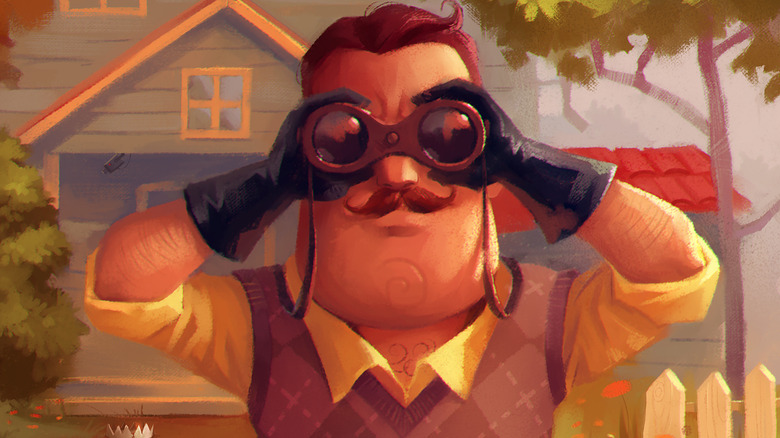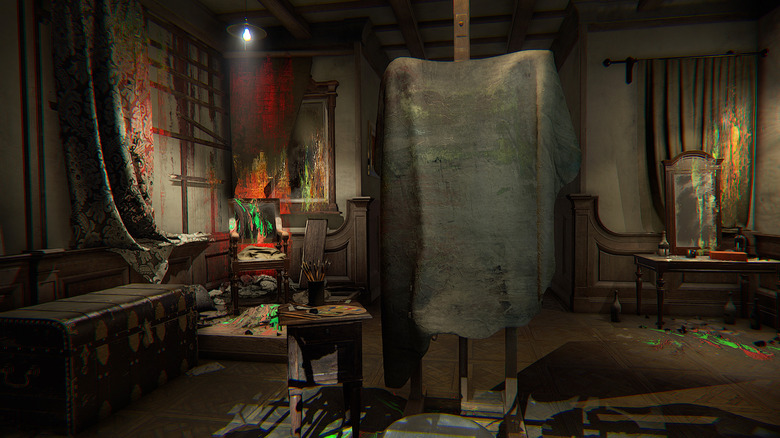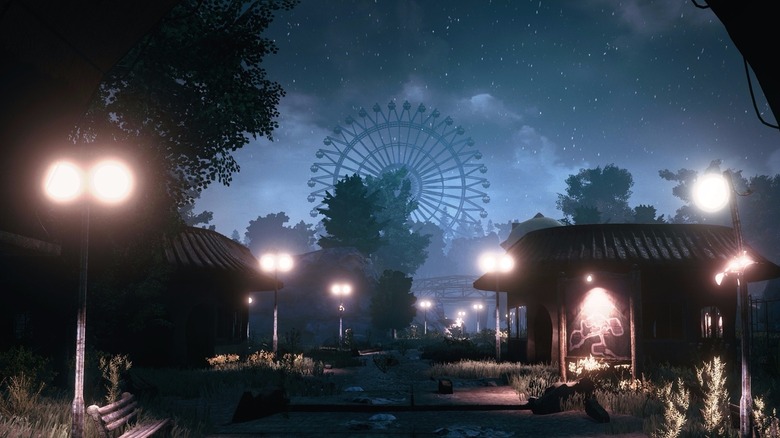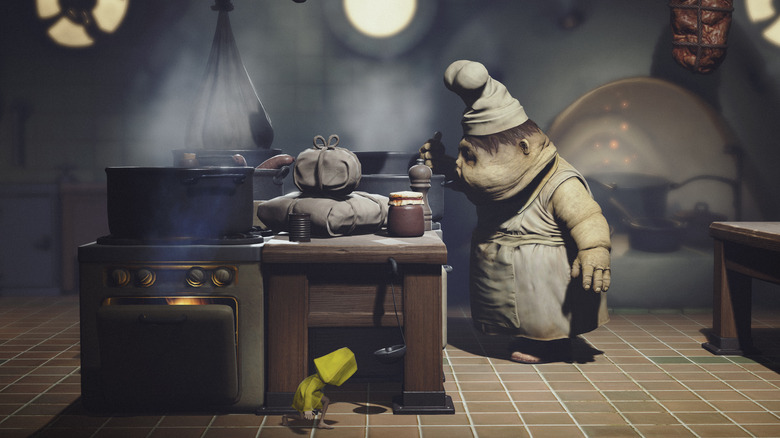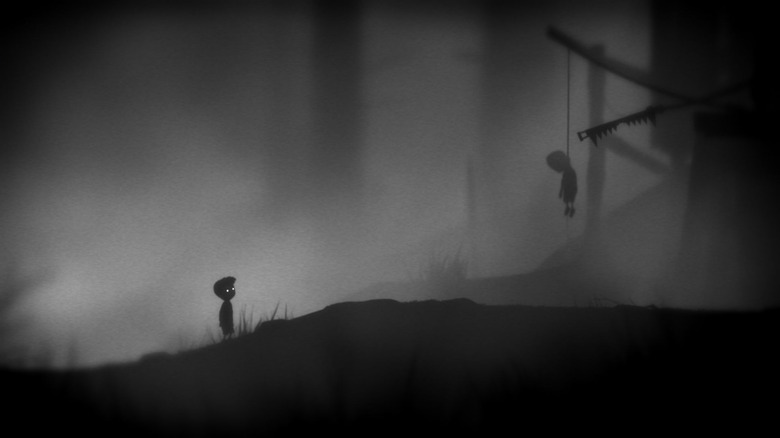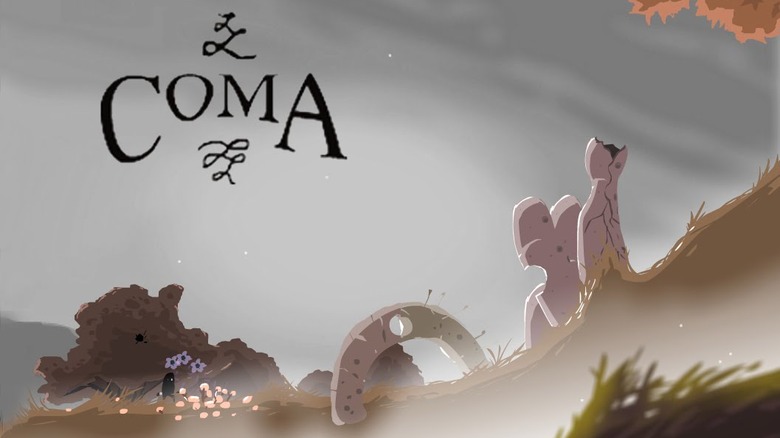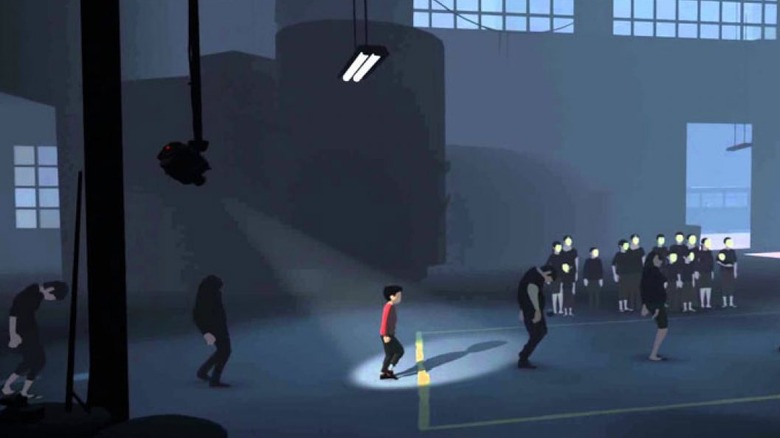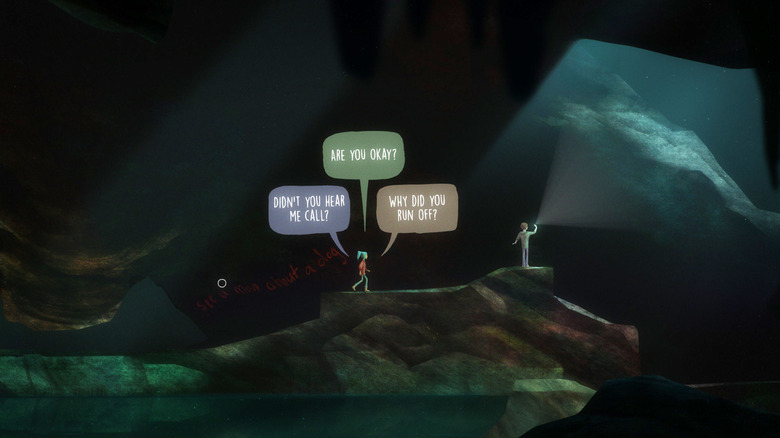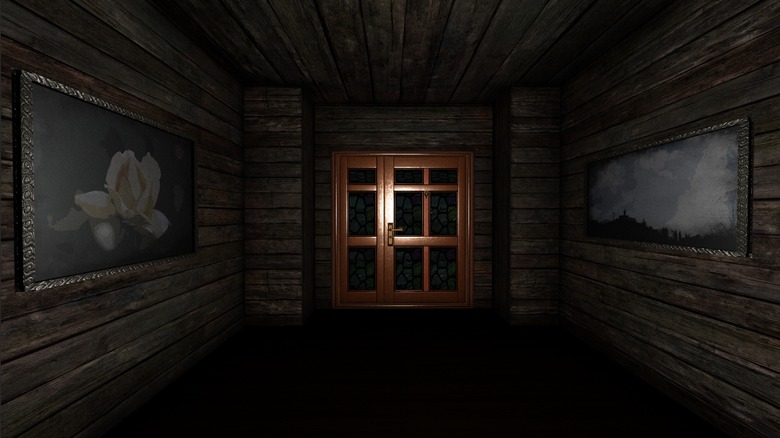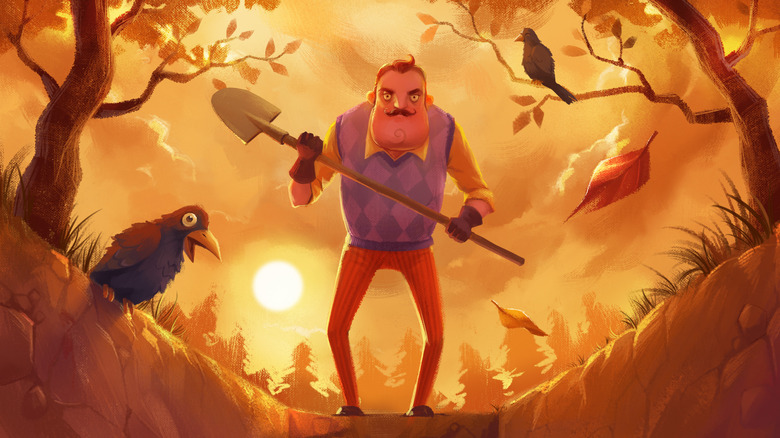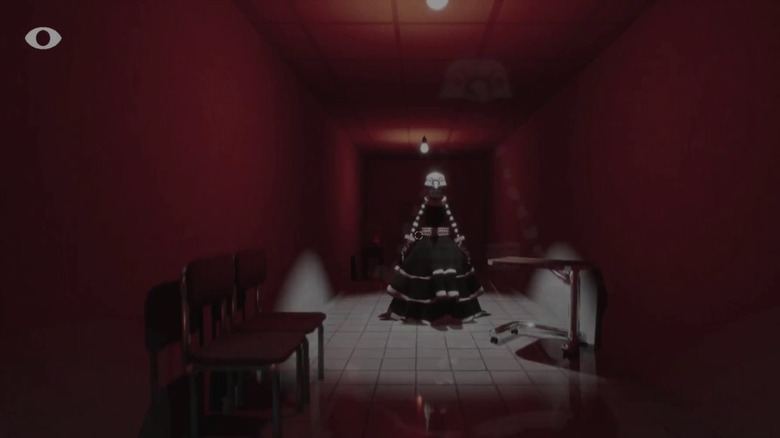Confusing Horror Game Endings Explained
Horror is a unique, stand-out genre in the gaming world because it often features nuanced storylines. Unlike first-person-shooters or racing games, players expect a mystery and an in-depth narrative from horror games. Oftentimes, they leave players with an open-ended finale that allows them to fill in the blanks themselves. Other times players are expected to put together the clues of a detailed and complex narrative based on the pieces of the puzzle provided.
The only problem is that sometimes, once the end of the game is reached, there is no obvious answer. Or if there is, it's not immediately recognizable without some more research. So today, we'll take a look at ten horror games with confusing endings and try to shed some light on what the game developers were trying to reveal to us. Or at least, what the most generally accepted interpretation of the endings are for game developers who are too secretive to give a concrete answer.
Layers of Fear complicates things with multiple endings
The 2016 psychological horror game Layers of Fear stood out the moment it was released because of its smart scares and complex narrative. Much of what happens in the game is symbolic and revolves around artistic representation. In Layers of Fear, you play as an artist whose muse (his wife) has been badly burned. Because of this, he's unable to paint the masterpieces he once did and he finds himself angry at everyone around him. Using alcohol as a coping mechanism makes him an unreliable narrator. It's often unclear what is actually happening in this house, and what is simply a construct of an unstable mind.
Throughout the game, certain decisions you make will influence which of three endings you get. Each ending is represented by the final painting the player has been putting together throughout the story, which could be a self-portrait, a family portrait, or his wife's portrait.
In the wife ending, the painter finds himself stuck in an endless loop, doomed to repeat the same cycle. He is unsatisfied with the painting of his late wife, always seeing her scars instead of her beauty. In the family portrait ending, the painter realizes that his behavior has isolated those most important to him, and he burns the paintings, himself, and the house. In the self-portrait ending, the painter decides his behavior was necessary to become a great artist and he celebrates his genius by displaying his masterpiece.
The Park shocks players with an unexpected memory
In Funcom's 2015 first-person psychological horror game The Park, you play as Lorraine, a single mother looking for her son Callum in an abandoned amusement park. But what the player comes to find throughout the experience is much more complicated than that. With flashbacks to shock therapy and allusions to anti-anxiety medications, it is clear that Lorraine is suffering from numerous mental health issues following the death of Callum's father.
At the end of the game, Lorraine finds Callum after completing many P.T.-type loops of her home. He is lying unconscious on a table and behind her stands one of the game's antagonists, The Boogeyman. He guides Lorraine to stab Callum with an ice pick, but in the end he disappears and it's her choice to go through with the murder.
While it appears that Lorraine literally killed her son, it is actually symbolic. She blames herself for his death. Lorraine was heavily medicated because of her depression and anxiety; unable to care for the son she was ill-equipped to nurture, her neglect led to Callum's disappearance and eventual death. In her mind, she was the one who killed Callum.
Little Nightmares will give you just that
2017's indie horror game Little Nightmares left players blown away by the unique art style and horrifying antagonists. The ending, however, confused many. While there is still some debate, the most widely accepted theory has been supported by multiple game theorists.
Towards the end of Little Nightmares, Six enters the home of The Lady. The Lady has several paintings on her walls, one of which features five women, four of whom are shrouded in darkness. Because this painting indicates that the Lady, the current leader of the Maw, had four predecessors, we can assume that The Lady is Five. This would make Six the next Lady.
The responsibility of ruling over The Maw is passed down between mother and daughter, as we can see by the painting of Six and The Lady found in The Lady's bedroom. Because of this, Six is the next in line for the role, but Six rebels against the norm in The Maw. With The Lady plagued by vanity, Six uses the only mirror still left intact to stun her so that she can then drink her blood and gain her power. Though this puts Six in charge of The Maw, she instead walks through the dining area, kills the guests of The Maw, and leaves into the sunlight, ending the cycle then and there.
Playdead's Limbo leaves a lot of questions unanswered
In 2010, Playdead released their debut title Limbo. In Limbo, you play as an unnamed boy who awakens in a forest. As you move your character through the environment, you encounter only a small number of people. The game has no dialogue, a minimalist soundtrack, and no multiplayer option. It's also left completely open-ended by the finale.
What little backstory we are given by Playdead informs us that the boy, "Uncertain of his sister's fate, enters LIMBO." The girl that we find at the end of the game is clearly the boy's sister, but it's where you find her that's more important. The load screen for Limbo depicts the same treehouse we see the sister under at the end of the game. But in the menu screen, the ladder leading up to the treehouse is broken. Underneath the ladder is a lumpy shape with flies buzzing around it. It seems that our protagonist's sister is in limbo because she fell from the ladder and died. The boy, in an attempt to get her back, ventures into limbo.
In the end, he finds his sister, sitting under that same treehouse with the ladder now fixed. Her nervous reaction to seeing her brother again, however, suggests that maybe her death wasn't as accidental as we thought and the boy is now stuck in this nightmare to atone for the murder of his sister.
Coma wants you to wake up
Coma is an in-browser game following a character named Pete. You begin in a house with cryptic messages written on the walls such as "this world is a lie" and "ring the dore bell." Once you've exited the residence, you meet a bird outside. Throughout the game, you're given advice, tips, and bits of story from the bird and other characters. The only problem is that there's no way to be sure who to trust.
The game continues to leave hints about a doorbell (or "dore bell" in the case of the game) while taking the character through dark dreamscapes. At the end of the game, the player finally reaches the doorbell and has the option to ring it. Once you ring the bell, the bird tells you that he'll see you soon.
So what really happened? The best explanation is that Pete is in a coma. The bird is his guide throughout his journey to the other side. Evidence for this is scattered throughout the game with the references to the bell. The ringing of a bell is associated with death, and the with fact that Pete is ascending upward at the end of the game, it's safe to assume he's on his way to heaven, having traversed the space between life and death.
Playdead offers another open-ended finale with Inside
In Playdead's Inside, you play as a nameless boy, much like in Limbo. In a bizarre and bleak landscape, you find numerous human experiments within the walls of the large buildings. By the end of the game, our player character melds with other victims of the human experimentation to become one giant flailing blob of limbs and flesh. And yes, it is as disturbing as it sounds.
By the time the blob has managed to break through the walls of the facility and roll down a hill to the lakeside, our protagonist in his new blobby form simply sits there and the game ends. This would make it seem like Inside is another open-ended game made by this talented group of developers. But trigger a secret ending by completing a few tasks, and our protagonist returns to a corn field he wandered through early on in the game.
Entering a secret bunker underground, the player flips a switch and the boy goes limp, much like the mindless bodies you controlled earlier. This secret ending explains that the player character was one of the mindless lifeless bodies all along. And the only reason he was able to do anything, is because we, the player, were using a mind control helmet in order to steer him.
The endless loop of Oxenfree
In 2016, Night School Studio released their debut title Oxenfree, an original and visually stunning game.
Throughout Oxenfree, our protagonist Alex sets multiple events into action depending on the dialogue options picked by the player. There are numerous alternate endings, though none of them offer much clarification on exactly what happened. The game ends, the camera glitches, and the dialogue shows our character starting the exact same story over again. Once the first playthrough is over, the main menu no longer shows an option for a new game. It only shows "Continue timeline?"
Oxenfree isn't exactly a beatable game in the traditional sense of the word. No matter what path you choose (even with the rare "convenience store ending"), Alex always remains stuck in a time loop. Because Alex went to Edward's Island in the first place, regardless of how the story plays out, she never actually gets to leave. The only way to ever really beat the game would be to never go to the island in the first place, but because the game starts out on a ferry going to Edward's Island, the player has no choice but to strand Alex in an endless loop, just like the spirits you disturbed by opening a rift. And now that you're stuck there, you'll become a vessel that a spirit will pilot.
A simulation of a virus on your computer isn't the only scary thing about A Dark Place
A Dark Place is a unique game in many senses of the word. Produced by XerStudios and receiving constant updates from the developer himself, the game offers a nightmare any gamer can relate to.
In A Dark Place, you are shown a seemingly simple low-graphics game, complete with relatively easy puzzles and instructions. The further you get into the game, however, the more bizarre things start to happen. The game takes over control of the player's computer, simulating computer crashes, viruses, and something akin to a spirit possessing your machine. Some of the true terror in A Dark Place comes simply from the fact that the player isn't entirely sure that their computer isn't being infected with malware.
There are numerous endings to A Dark Place, including the "good," "bad," "true," and "fake" endings, but the truth of interpreting the game actually comes from the realization that it doesn't matter which ending you get. No matter what you do, the game developer is still the one in control of everything. The developer edits the game while the player is actually playing it, freezing their control and showing a peek behind the curtain. And in the end, no matter which ending the player gets, they find that none of it was up to them. The developer will always be in control.
Hello Neighbor hides more horrors under the surface
In 2018's Hello Neighbor, you play as a child who sees your neighbor across the street participating in some sinister looking activities. A secret room with the neighbor's family picture, missing posters for a young boy and young girl, and a car crash seen in a nightmare sequence give us a plot. The neighbor lost his wife in a car accident. Somewhere around the same time, his son and daughter went missing. In order to cope with the loss of his family, the neighbor has been kidnapping children and keeping them in his basement to try to fill the void his missing children left.
In Act 2, the player character falls victim to the neighbor and is locked in the basement. But by the time the player gets to Act 3, we see that the neighbor's house is in ruin. Returning to the house in a nightmare, we are forced to confront our fears regarding the neighbor and the things that happened when the player was locked in the basement. Shadow figures represent the player's fears and eventually, you are able to defeat the neighbor and conquer your fears. The same, unfortunately, can't be said for the neighbor who, unable to cope with the loss of his family and his own crimes, is forever locked in a room with his fear knocking at the door.
Close Your Eyes has four endings that show the outside world was already over
Indie horror game Close Your Eyes takes place on Earth in the year 2057. Your player character is in V.I.E.W. Laboratories, given instructions to close their eyes should they run into any Husks, and taught basic human functions. The premise seems simple enough, but the bizarre dreamscapes and symbolism encountered through the game hint at something more.
Through the course of Close Your Eyes, you learn that the black and white clad robot has been trying to help you the whole time and that you, the player, are somehow connected to her. In the end you can decide to try to save the husks, help the black and white robot, watch the timer run out, or go back through the door you entered. And while there may be four different possible endings, they all mean the same thing: Earth, as you knew it, has already been destroyed by World War Five. V.I.E.W. Laboratories is an underground facility dedicated to creating humans that can withstand the nuclear holocaust outside. In order to survive, everyone must close their eyes to the horrors of the past and the consequences of what it took to stabilize humanity.

